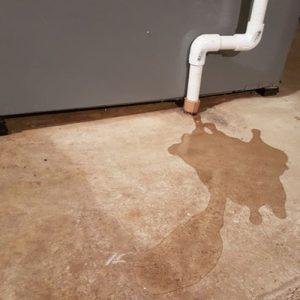Blog Categories
- Appliances Four
- Athletic Seating
- Auto Helpers
- Automated Stock Rooms
- Chocolate Four
- CuraFlo
- Damaged Goods Dating
- Flood Insurance Four
- Game Addict
- Hi Tech Pest Control
- HVAC Four
- Medical Labels Four
- Mental Health Four
- National CWS
- Promotional Ideas
- Seguros Lara Insurance
- Stem Cell Worx
- The Hidden Truth
- The Last Refuge
- The Mozilla Blog
- Video Editing Four
- Web Design Dev
- Website Development Four
- Windows Blog
why is my furnace leaking water?

Water leaks in your home are frustrating, time-consuming, and can cause costly damage – not to mention costly repairs. But what do you do when it’s your furnace leaks water? It’s easy for panic to set in – especially as the temperatures get colder and colder. Here’s what you need to do if you find yourself in this situation.
If you discover your furnace leaking water, the first thing you should do is turn it off. First, make sure your thermostat is off. Then turn the shut-off valve, located on the gas line, connected to your furnace and the electrical breakers associated with your furnace. The problem causing the furnace leak is likely something only an HVAC professional should handle.
You should then mop up any water that’s collected around the base of your furnace. Standing water is bad for your furnace and your floor. Remember: Only do this once your furnace electrical circuit is shut off. Then, stop kicking yourself for not installing a floor drain, and if you do have a floor drain, make sure it isn’t clogged. If your furnace looks like a lonely island in the middle of a small pond, it’s possible to rent a wet/dry vacuum from big hardware stores to make cleanup easier.
There’s a Leak or a Clog in the Condensate Lines High-efficiency furnaces create condensation through the heat exchange process. When operating normally, this condensation is drained safely away from your furnace through the condensate line and drain trap. If there’s a leak or a clog in the condensate lines, you’ll quickly find a puddle around your furnace.
Your Condensate Pump Isn’t Working A condensate pump is what pushes the water through the lines and away from your furnace. These can experience mechanical problems, which often cause water leaks. At times, it may stay on due to an issue with the float and check valves. It’s also possible the condensate lines were not placed properly, or buildup has caused a clogged condensate trap or condensate drain line and caused furnace leaking and causing headaches.
The Metal Exhaust Pipe is Creating Condensation If your furnace has an AFUE rating of less than 90, it’ll have a metal exhaust vent pipe (vs. the white PVC vent pipe of a high-efficiency furnace). The exhaust vent carries away the gases produced during the combustion process through the exhaust pipe and releases them outside while they’re still hot. If this venting pipe isn’t properly sized for your furnace, gasses can get trapped by the extra air. Eventually, they cool down – this forms condensation, which leaks out of your furnace.
The Humidifier is Leaking Many homeowners choose to add a built-in humidifier to their heating system to make their homes more comfortable during the dry winter months. They have water constantly moving through them, and if they spring a leak or become clogged, it looks like it’s your furnace that’s leaking water. A humidifier leak will have its own set of fixes, but a leaking humidifier is still a water leak.
Dirty Furnace Filter A leaking furnace should not be your only motivator to replace your filter. A dirty furnace can restrict airflow, which causes your furnace to overwork and subsequently overheat. Eventually, this causes the breakdown of your furnace system altogether, which obviously is an expensive problem to fix. Replacing the filter is a relatively simple, inexpensive fix though it can be easy to forget about maintenance with your busy schedule. We recommend setting a filter replacement reminder on your calendar every 90 days, so you don’t forget!
why is my furnace leaking water?
The post why is my furnace leaking water? appeared first on KDM Gas.
Re Posted From: why is my furnace leaking water?

Water leaks in your home are frustrating, time-consuming, and can cause costly damage – not to mention costly repairs. But what do you do when it’s your furnace leaks water? It’s easy for panic to set in – especially as the temperatures get colder and colder. Here’s what you need to do if you find yourself in this situation.
If you discover your furnace leaking water, the first thing you should do is turn it off. First, make sure your thermostat is off. Then turn the shut-off valve, located on the gas line, connected to your furnace and the electrical breakers associated with your furnace. The problem causing the furnace leak is likely something only an HVAC professional should handle.
You should then mop up any water that’s collected around the base of your furnace. Standing water is bad for your furnace and your floor. Remember: Only do this once your furnace electrical circuit is shut off. Then, stop kicking yourself for not installing a floor drain, and if you do have a floor drain, make sure it isn’t clogged. If your furnace looks like a lonely island in the middle of a small pond, it’s possible to rent a wet/dry vacuum from big hardware stores to make cleanup easier.
There’s a Leak or a Clog in the Condensate Lines High-efficiency furnaces create condensation through the heat exchange process. When operating normally, this condensation is drained safely away from your furnace through the condensate line and drain trap. If there’s a leak or a clog in the condensate lines, you’ll quickly find a puddle around your furnace.
Your Condensate Pump Isn’t Working A condensate pump is what pushes the water through the lines and away from your furnace. These can experience mechanical problems, which often cause water leaks. At times, it may stay on due to an issue with the float and check valves. It’s also possible the condensate lines were not placed properly, or buildup has caused a clogged condensate trap or condensate drain line and caused furnace leaking and causing headaches.
The Metal Exhaust Pipe is Creating Condensation If your furnace has an AFUE rating of less than 90, it’ll have a metal exhaust vent pipe (vs. the white PVC vent pipe of a high-efficiency furnace). The exhaust vent carries away the gases produced during the combustion process through the exhaust pipe and releases them outside while they’re still hot. If this venting pipe isn’t properly sized for your furnace, gasses can get trapped by the extra air. Eventually, they cool down – this forms condensation, which leaks out of your furnace.
The Humidifier is Leaking Many homeowners choose to add a built-in humidifier to their heating system to make their homes more comfortable during the dry winter months. They have water constantly moving through them, and if they spring a leak or become clogged, it looks like it’s your furnace that’s leaking water. A humidifier leak will have its own set of fixes, but a leaking humidifier is still a water leak.
Dirty Furnace Filter A leaking furnace should not be your only motivator to replace your filter. A dirty furnace can restrict airflow, which causes your furnace to overwork and subsequently overheat. Eventually, this causes the breakdown of your furnace system altogether, which obviously is an expensive problem to fix. Replacing the filter is a relatively simple, inexpensive fix though it can be easy to forget about maintenance with your busy schedule. We recommend setting a filter replacement reminder on your calendar every 90 days, so you don’t forget!
why is my furnace leaking water?
The post why is my furnace leaking water? appeared first on KDM Gas.
Re Posted From: why is my furnace leaking water?

